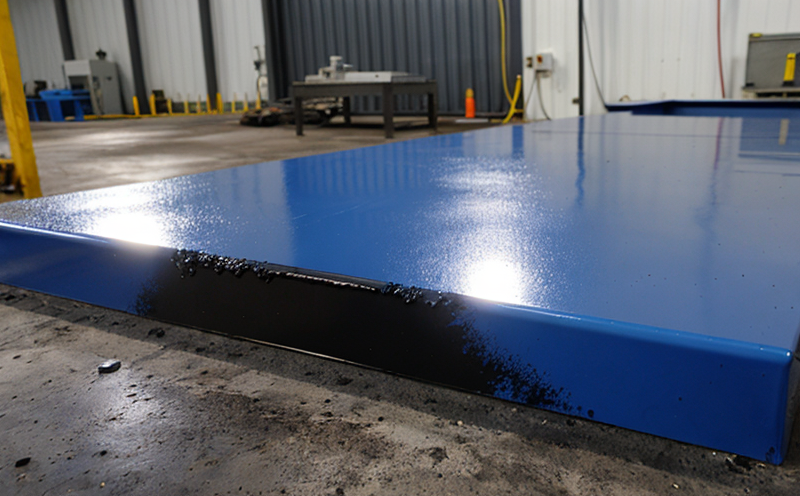ISO 2178 Non-Magnetic Coating Thickness Measurement
The ISO 2178 standard specifies a method for measuring the thickness of non-magnetic coatings using magnetic methods. This is particularly useful in sectors such as aerospace, automotive, and electronics where metallic parts are coated with materials like plastics, ceramics, or organic compounds to enhance corrosion resistance, improve wear properties, or achieve specific aesthetic outcomes.
Non-magnetic coatings play a crucial role in various industries due to their ability to protect metal surfaces from environmental degradation. However, ensuring that these coatings meet the required thickness specifications is critical for maintaining product integrity and performance. The ISO 2178 method provides a reliable way to measure coating thickness without affecting the magnetic properties of the underlying metal surface.
The testing process involves subjecting the specimen to an alternating current field in such a manner that the magnetic flux density at the surface is determined by the thickness and permeability of the coating. This measurement can then be correlated with the actual coating thickness, allowing for accurate assessment without disturbing the integrity of the coating.
This technique ensures that manufacturers adhere to precise thickness tolerances as specified in their quality assurance protocols. It also supports regulatory compliance and enhances product reliability by ensuring consistent performance across production batches. By using ISO 2178, companies can ensure they are meeting international standards while maintaining high-quality output.
For R&D engineers working on new coating formulations or modifying existing processes, this method provides valuable data that helps refine techniques to achieve optimal coating thicknesses. Compliance officers rely on accurate measurements like those provided by ISO 2178 to ensure their organization meets all necessary regulatory requirements. In summary, the ISO 2178 standard is an indispensable tool for quality assurance professionals and engineers in industries where non-magnetic coatings are employed.
- Accurate measurement of coating thickness without affecting magnetic properties
- Precise correlation between magnetic flux density and actual coating thickness
- Supports compliance with international standards for quality assurance
- Helps maintain product integrity and performance across production batches
Why It Matters
The importance of ISO 2178 non-magnetic coating thickness measurement cannot be overstated, especially in industries where the quality and reliability of materials directly impact safety, durability, and performance. In aerospace applications, for instance, ensuring that protective coatings are applied to the correct thickness can mean the difference between a safe flight and catastrophic failure.
In automotive manufacturing, consistent coating thickness ensures that vehicles meet stringent durability standards, enhancing overall quality and longevity of components like engine parts or exhaust systems. For electronic devices, non-magnetic coatings protect sensitive internal mechanisms from interference, ensuring reliable operation even in challenging environments.
Moreover, adherence to international standards like ISO 2178 demonstrates a commitment to excellence and helps build trust with customers and regulatory bodies alike. This standardization also facilitates easier integration of products into global supply chains by ensuring uniformity across different manufacturing processes worldwide.
The ability to accurately measure coating thickness using magnetic methods without altering the underlying metal's properties is particularly advantageous in fields where both magnetic and non-magnetic materials coexist. It allows for precise control over critical parameters that influence the overall performance of the final product, thereby enhancing user experience and satisfaction.
Why Choose This Test
- Precise measurement without affecting magnetic properties
- Highly accurate results ensuring compliance with international standards
- Non-destructive testing method preserving the integrity of coated samples
- Supports consistency in production processes and quality assurance
- Provides data essential for R&D improvements and innovation
- Affirmation of compliance with relevant industry regulations
Environmental and Sustainability Contributions
The use of ISO 2178 non-magnetic coating thickness measurement contributes positively to environmental sustainability by ensuring that coatings are applied efficiently, thus minimizing waste. By adhering strictly to the specified thickness requirements, manufacturers can optimize resource usage, reduce energy consumption associated with over-coating or undercoating processes, and decrease emissions from unnecessary rework.
Furthermore, accurate measurement helps in achieving longer-lasting products, which translates into reduced replacement rates and lower disposal volumes. This aligns directly with broader sustainability goals by promoting the lifecycle extension of goods and reducing landfill contributions. Additionally, the standard supports responsible sourcing practices by encouraging the use of sustainable materials in coatings.
Through meticulous application control facilitated by ISO 2178 testing, industries can reduce their carbon footprint significantly while enhancing product performance. This approach not only benefits individual enterprises but also contributes to collective efforts towards more sustainable industrial practices globally.





